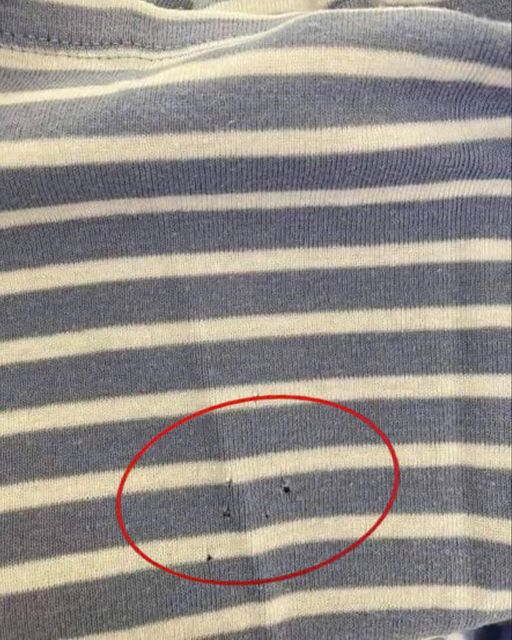ADVERTISEMENT
If You Spot These Holes in Your Clothes, Here’s What You Need to Know!
It’s a scenario we’ve all encountered at some point: You’re getting ready to wear your favorite shirt, pair of pants, or sweater, and you notice small, mysterious holes in the fabric. What started as a minor inconvenience can quickly turn into a source of frustration, leaving you wondering how those holes appeared and, more importantly, how to prevent them from happening again.
Holes in clothing can occur for various reasons, some of which may surprise you. Understanding the cause of these holes can help you take the proper steps to address the issue, preserve your clothing, and even prevent it from happening in the future.
Common Types of Holes in Clothes and What They Mean
Not all holes are created equal, and the type of hole you’re dealing with can give you important clues about what caused it. Here are some of the most common types of holes and what you can do about them:
1. Moth Holes
- Appearance: Small, round, or irregular-shaped holes often found in wool, cashmere, and other natural fibers.
- Cause: Moths, specifically the larvae of clothes moths, are notorious for causing damage to fabrics. They feed on natural fibers, creating holes in clothing over time.
- Solution: To prevent moth damage, store your clothes in airtight containers or bags when they’re not in use. Use mothballs, cedar blocks, or lavender sachets to deter moths. If you notice moth holes, gently wash and dry-clean affected garments. You can also repair the holes with patches or by darning the fabric.
2. Fraying from Washing or Drying
- Appearance: Small holes around the seams or edges of clothing, often near the hem or collar.
- Cause: Repeated washing, drying, or rough handling of clothing can cause fabric fibers to break down. This fraying typically happens with delicate fabrics or after many washes.
- Solution: To prevent fraying, avoid using harsh detergents or high-heat settings when drying. Turn clothes inside out before washing, and use gentle cycles. For existing frays, consider stitching the edges or using fabric glue to seal the raw edges.
3. Pilling Holes
- Appearance: Small holes accompanied by fuzz or pilling (tiny balls of fabric that form on the surface).
- Cause: Pilling occurs when friction causes fibers to break loose and ball up, often due to rubbing against other surfaces, like seat belts, bags, or even your own body.
- Solution: To avoid pilling, wash clothes inside out and on a gentle cycle. Avoid fabric softeners, which can contribute to pilling. A fabric shaver can help remove pills and smooth out the fabric. If a hole has appeared due to pilling, you may be able to repair it with a patch or needle-and-thread fix.
For Complete Cooking STEPS Please Head On Over To Next Page Or Open button (>) and don’t forget to SHARE with your Facebook friends
ADVERTISEMENT
